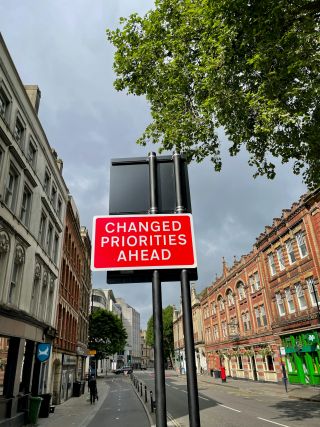Creativity
How Temporal Scarcity Can Improve Your Life
An unexpected way to boost motivation, productivity, focus, and creativity.
Posted August 14, 2024 Reviewed by Jessica Schrader
Key points
- Temporal scarcity refers to the perception or reality that time is limited or running out.
- Temporal scarcity can enhance productivity, sharpen focus, stimulate creativity, and spark motivation.
- The key to harnessing temporal scarcity's benefits lies in maintaining a balance between pressure and action.
What is temporal scarcity?
Temporal scarcity refers to the perception or reality that time is limited or running out. This concept highlights the finite nature of time, emphasizing that there is a restricted amount of it available to accomplish tasks, achieve goals, or experience life. Temporal scarcity can influence our behavior and decision-making, often creating a sense of urgency or motivating us to prioritize our actions based on what we deem most important or valuable. It underscores the importance of time as a resource, encouraging more intentional and focused living.
While viewing time as a scarce and diminishing resource can initially seem stressful and anxiety-provoking, it can also have positive effects. Temporal scarcity can enhance productivity, sharpen focus, stimulate creativity, and spark more of a motivation to live like we mean it.
Temporal Scarcity and Productivity
One of the most significant benefits of temporal scarcity is its potential to enhance productivity. When we perceive time as limited, we’re often motivated to work more efficiently to complete tasks within the available time frame. This phenomenon—known as the "deadline effect"—suggests that deadlines can spur us into action, put a pin in procrastination, and promote task completion (Ariely & Wertenbroch, 2002).
Research supports the idea that moderate levels of time pressure can lead to increased productivity. A study by Parker, Jimmieson, and Amiot (2010) found that employees who experienced moderate time pressure reported higher levels of task completion and job satisfaction compared to those with low or excessive time pressure. Temporal scarcity can encourage us to prioritize tasks, allocate our time more effectively, and maintain a steady work pace. It’s easier to dismiss the unimportant tasks and laser in on what really matters with an approaching deadline, isn’t it?
Temporal scarcity can help us combat Parkinson’s Law—the uncanny notion that "work expands to fill the time available for its completion" (Cyril Northcote Parkinson, 1955). When time is perceived as abundant, we may engage in trivial activities or become distracted, leading to inefficiencies. Conversely, a sense of temporal scarcity can help us focus on the MITs (“most important tasks”), minimize distractions, and complete work more quickly (Claessens, van Eerde, Rutte, & Roe, 2007).
Temporal Scarcity and Focus
Temporal scarcity also has the potential to sharpen our focus and enhance cognitive performance. When time is limited, we’re more likely to concentrate on the most critical aspects of a task, filtering out irrelevant information and distractions (Levine, 2005). This heightened focus can lead to more effective problem-solving and decision-making, particularly in situations where quick thinking is required.
For example, a study by Beilock and Carr (2005) demonstrated that individuals under moderate time pressure performed better on complex cognitive tasks compared to those with unlimited time. The researchers suggested that time pressure forces us to streamline our thought processes, reducing the likelihood of overthinking or becoming bogged down by unnecessary details. This ability to focus on the essentials is particularly valuable in high-stakes environments, such as emergency response or competitive business settings.
In addition to enhancing focus, temporal scarcity can also improve time management skills. When we’re aware that our time is limited, we’re more likely to plan our activities carefully, set clear priorities, and allocate time efficiently (Macan, 1994). These skills are crucial for managing multiple responsibilities and achieving long-term goals.
Temporal Scarcity and Creativity
While temporal scarcity is often associated with stress, it can also serve as a powerful catalyst for creativity. The constraints imposed by limited time can push us to think outside the box, generate novel ideas, and find innovative solutions to problems (Amabile, Hadley, & Kramer, 2002). This paradoxical effect of scarcity on creativity is supported by the "creative constraint" theory, which posits that limitations—including time constraints—can stimulate creative thinking by forcing us to approach problems from new angles (Stokes, 2005).
Research by Amabile et al. (2002) found that while extreme time pressure can hinder creativity, moderate levels of time scarcity can enhance it. In their study of professionals in creative industries, the researchers discovered that individuals working under moderate time pressure were more likely to produce creative work compared to those with ample time. The authors suggested that temporal scarcity encourages us to focus intensely on the task at hand, often leading to unexpected insights and creative breakthroughs.
Furthermore, temporal scarcity can foster a sense of urgency that drives innovation. When time is limited, we’re more likely to experiment with unconventional approaches, take calculated risks, and pursue bold ideas (Haught-Tromp, 2017). This willingness to innovate is particularly valuable in fields that require constant adaptation and forward-thinking, like technology, design, and entrepreneurship.
Temporal Scarcity and Motivation

Possessing an awareness that time is finite can significantly enhance our motivation to live more fully. Acknowledging that our days are limited prompts us to prioritize meaningful experiences, relationships, and personal growth (Kurtz, 2008). This sense of urgency drives us to make deliberate choices, focus on what really matters, and seize opportunities we might otherwise overlook. It encourages us to break free from procrastination, embrace challenges, and cherish even our most mundane of moments. By understanding that time is a precious resource, we can be inspired to live with greater intention, pursue our passions, and create a life rich in purpose and fulfillment.
Time's Up... So Let's Wrap Up
Temporal scarcity, initially perceived as a negative experience, can offer significant benefits when managed effectively. By enhancing productivity, sharpening focus, and stimulating creativity, temporal scarcity can be a valuable tool for individuals and organizations alike. However, the key to harnessing these benefits lies in maintaining a balance—leveraging the positive effects of time pressure while mitigating its potential drawbacks as stress-inducers. Let’s appreciate the action tendencies and motivation that can come from an awareness of our proverbial task and life countdown timers.
References
Amabile, T. M., Hadley, C. N., & Kramer, S. J. (2002). Creativity under the gun. Harvard Business Review, 80(8), 52-61.
Ariely, D., & Wertenbroch, K. (2002). Procrastination, deadlines, and performance: Self-control by precommitment. Psychological Science, 13(3), 219-224.
Beilock, S. L., & Carr, T. H. (2005). When high-powered people fail: Working memory and "choking under pressure" in math. Psychological Science, 16(2), 101-105.
Claessens, B. J. C., van Eerde, W., Rutte, C. G., & Roe, R. A. (2007). A review of the time management literature. Personnel Review, 36(2), 255-276.
Claessens, B. J. C., van Eerde, W., Rutte, C. G., & Roe, R. A. (2007). A review of the time management literature. Personnel Review, 36(2), 255-276.
Fritz, C., Lam, C. F., & Spreitzer, G. M. (2011). It's the little things that matter: An examination of knowledge workers' energy management. Academy of Management Perspectives, 25(3), 28-39.
Haught-Tromp, C. (2017). The green eggs and ham hypothesis: How constraints stimulate creativity. Psychology of Aesthetics, Creativity, and the Arts, 11(4), 376-383.
Levine, R. V. (2005). A geography of time: The temporal misadventures of a social psychologist. Basic Books.
Locke, E. A., & Latham, G. P. (2002). Building a practically useful theory of goal setting and task motivation: A 35-year odyssey. American Psychologist, 57(9), 705-717.
Macan, T. H. (1994). Time management: Test of a process model. Journal of Applied Psychology, 79(3), 381-391.
Parker, S. K., Jimmieson, N. L., & Amiot, C. E. (2010). The stress-buffering effects of control on task satisfaction and perceived goal attainment: An experimental study of time pressure and performance. Journal of Occupational Health Psychology, 15(3), 215-229.
Schaufeli, W. B., Taris, T. W., & Bakker, A. B. (2006). Dr. Jekyll or Mr. Hyde: On the differences between work engagement and workaholism. In R. J. Burke (Ed.), Research companion to working time and work addiction (pp. 193-217). Edward Elgar Publishing.
Stokes, P. D. (2005). Creativity from constraints: The psychology of breakthrough. Creativity Research Journal, 17(2-3), 183-193.
Kurtz, J. L. (2008). Looking to the future to appreciate the present: The benefits of perceived temporal scarcity. Psychological Science, 19(12), 1238-1241.




